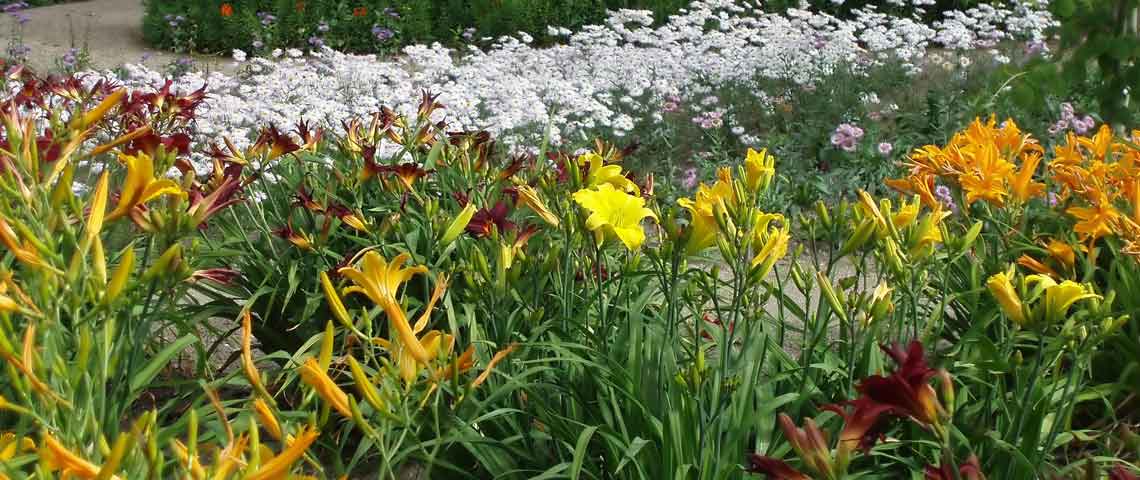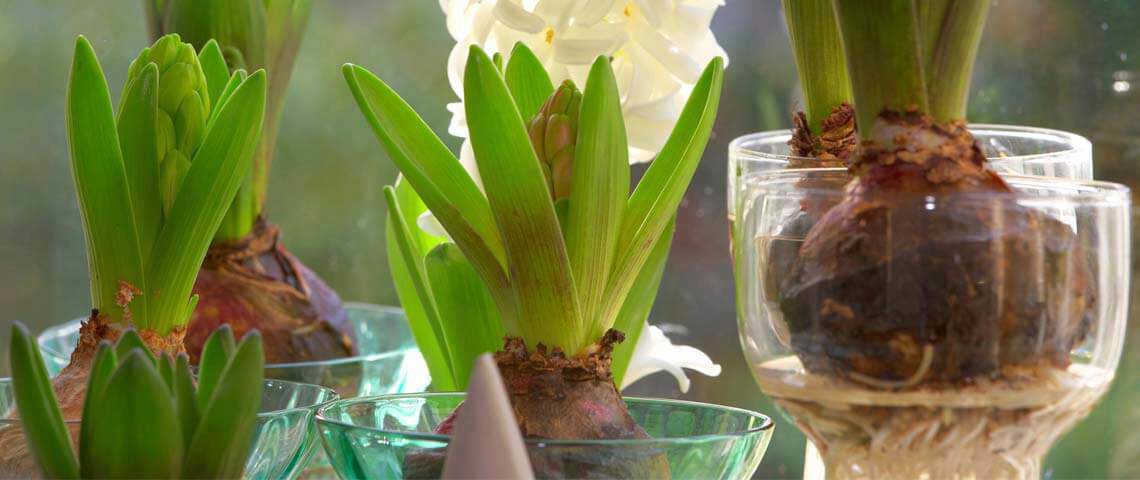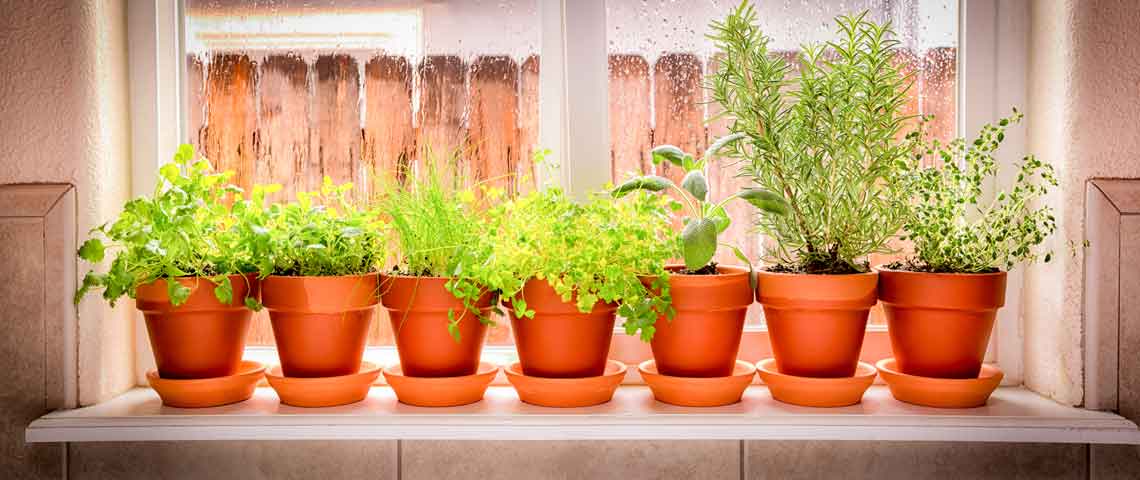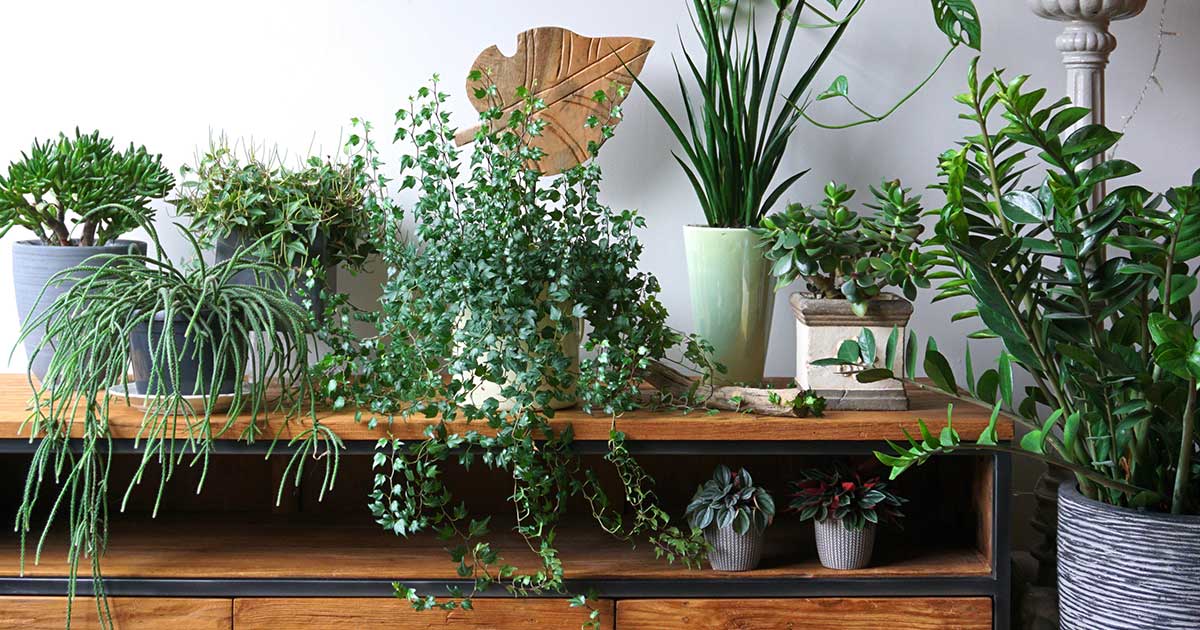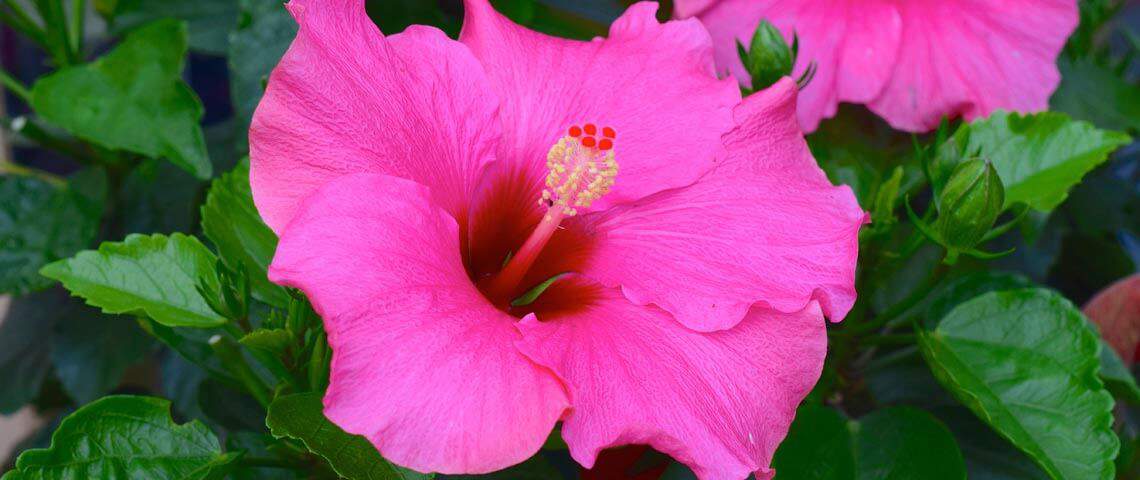How to Grow and Fertilize Perennials
Woven through borders and foundation plantings, perennials can be your landscape's crowning glory. Annuals and their static blossoms have their place, but perennials reward gardeners with a symphony of ever-changing color and bloom year after year. Keep perennials healthy and well-fed to enjoy all they have to give.
Understanding Perennial Ways
Perennials are in for the long haul. Plant them once, and they come back every year, so you don't have to plant again. With proper care and conditions, perennials return, often increasing in size, each year, unlike annuals, which live a single season, give their all and die. Perennials naturally take at least three years to complete their life cycle. They generally flower for shorter periods of time, each type with its own timing, but their variety in bloom times, and their textures, colors and forms keep landscapes looking fresh and vibrant. Proper fertilizers help perennials keep their beauty and vigor, and prepare for coming years.
Compared to natural settings, perennial beds are crowded and competitive. All those lovely flowers contend for the same nutrients. Even plants that naturally thrive in poor soil benefit from fertilizers in garden settings. Feed them properly, and forget about weak, lanky plants or few blooms. High-nitrogen fertilizers, including common houseplant foods, can stimulate leafy, green, grassy growth. But flowering perennials need fertilizers that support prolific blooms.

Feeding for Flowers and Long-Lasting Beauty
Stretch perennial bloom times and fuel luxuriant blossoms with a solid nutritional foundation. Start perennials at planting time and each spring thereafter with a complete, balanced fertilizer — one that provides equal percentages of the three primary plant nutrients: nitrogen, phosphorus and potassium. Lilly Miller All Purpose Planting & Growing Food 10-10-10 combines traditional plant foods with natural ingredients in a complete, balanced formula for lush, steady perennial growth.
Throughout the growing season, abundant flowers, prolonged blooms and healthy roots need added fuel. Heavy feeders, such as heirloom peonies and fragrant phlox, demand it. A fertilizer with a higher percentage of phosphorus relative to other nutrients — one where the middle number on the package is the highest — helps take perennials from listless and lacking to terrific. Added phosphorus supports bigger, more colorful flowers and strong roots, and helps perennials use other nutrients more efficiently. Pennington Rejuvenate Plant Food Rose & Flower 4-6-3 revitalizes your soil with essential nutrients and gives perennials the nutritional foundation they need for vigorous growth and dependable blooms, and keeps on feeding for up to four months.

Getting Bonus Blooms from Perennials
Healthy, well-fed perennials have more to give, but they need your help. Keep them flowering longer and encourage new blooms by “deadheading." In nature, flower production slows as blooms begin to set seed. Deadheading removes spent flower heads, so seeds don't form, and perennials keep blooming instead. Deadhead perennials by hand or with pruners. Simply pinch or cut stems back to a new flower, bud or leaf. Remove the entire head, not just wilting petals. Cut blooms with single, bare stems back to their base.
Help perennials give even more with a practice known as shearing — common among commercial growers and savvy gardeners. Shear late-blooming perennials back early in the season, long before they bloom, with a pair of garden or hedging shears. This encourages fuller plants and more profuse blooms later on. Shear early season bloomers after they flower for fresh, full foliage and a second, smaller flush of flowers that often follow.
With bloom-enhancing care and proper nutrition from Lilly Miller products and the rest of the Pennington fertilizer line, you can keep well-fed perennials at the top of their blooming game and leave them well-prepared for a repeat next year.

Added Fun With Petal-Based Dyes
Deadheaded perennial blooms make colorful compost, but they can also brighten your home. Dry petals add color and fragrance to potpourris, but fresh petals create soft, subtle fabric dyes. A large piece of fabric takes several cups of petals, depending on the flower and the intensity you desire, but a day's worth of deadheading will likely provide a good amount.
Dyes may stain pots and spoons and fingers, so dedicate a pot and utensils to the task, and wear gloves. For best results, dye pale (whites or neutrals) natural fabrics, such as cotton, linen, silk or wool. Pre-launder your fabric to accommodate shrinkage, then follow these simple steps to dye:
- Separate petals from flower heads and stems. Flowers that color your fingers or garden gloves are good bets for dyes.
- Chop petals into small pieces, as you would culinary herbs. The cut edges help release color.
- Place petals in a large pot and add water equal to twice the amount of petals. Bring the mixture to a boil, and then simmer as pigments flow.
- Soak your fabric in a mixture of 1 part white vinegar to 4 parts cold water for one hour, then rinse in cold water. This prepares fabric to receive petal dyes.
- Test your dye color with a small fabric swatch, and strain out petal pieces, if desired. Petal dyes can yield surprises, so always test. Coreopsis delivers golden hues, while cornflowers give blues and purples, but dyes and petals don't always match.
- Lower your wet fabric into the dye. Simmer until you have the color you want, or turn off the heat and let fabric soak overnight. Colors look darkest when wet; they soften as fabric dries.
- Rinse the petal-dyed fabric in cold water until the water runs clear. Launder the piece in cold water, by itself, the first time. Then enjoy the soft, petal-based, perennial hues.
Lilly Miller is a registered trademark of Central Garden & Pet Company. Pennington is a registered trademark of Pennington Seed, Inc.

